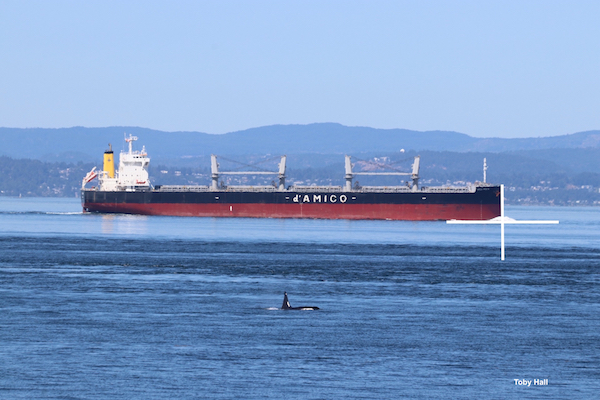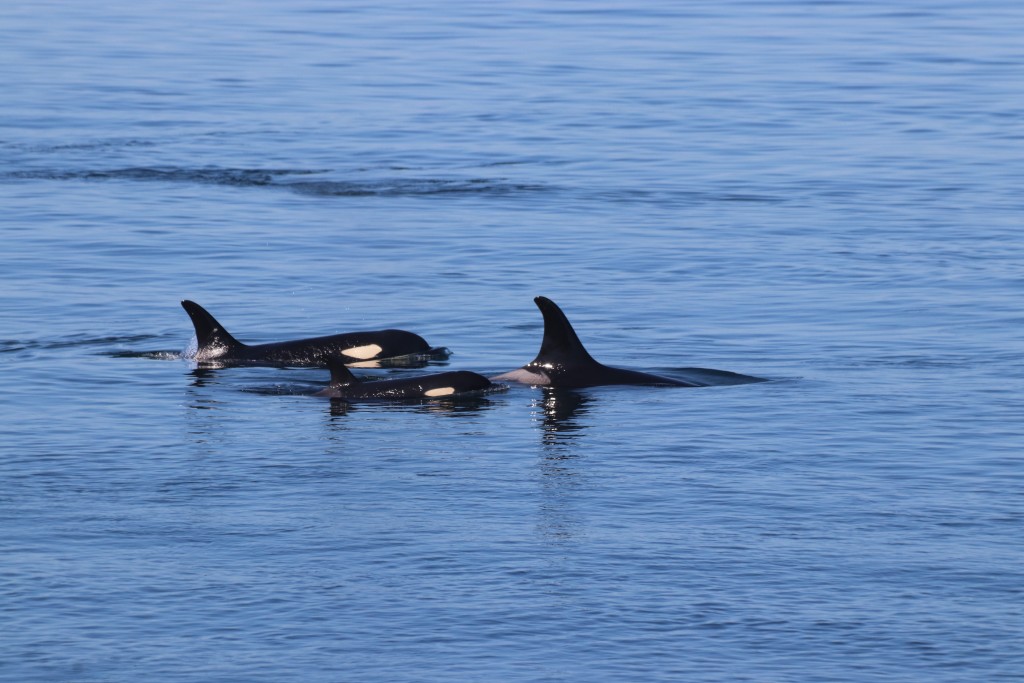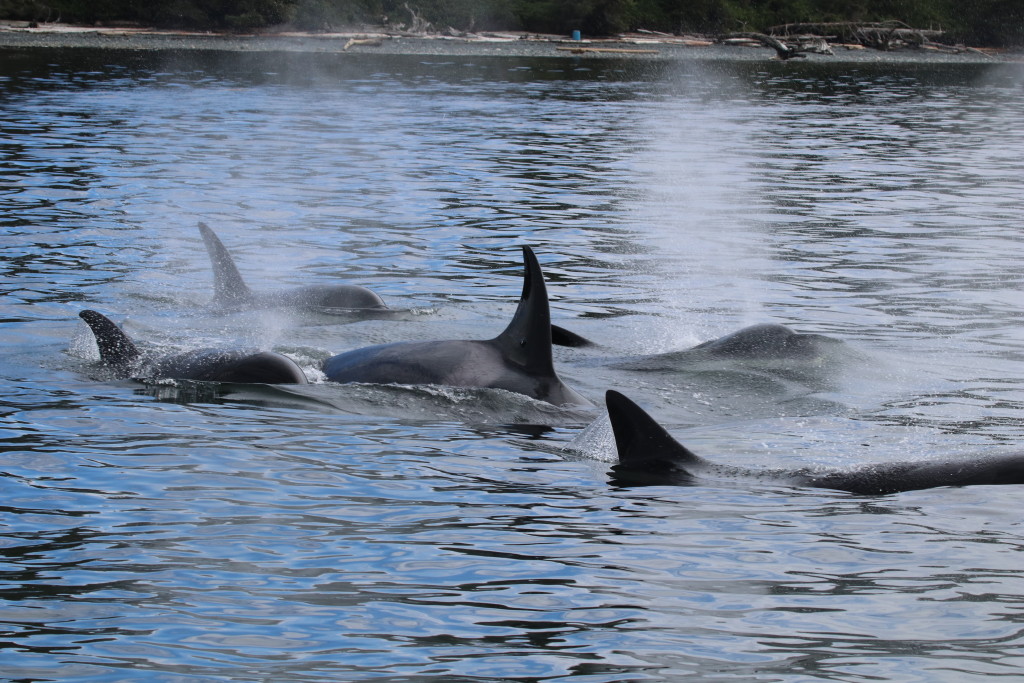This summer, from mid-July to the end of September, we studied southern resident killer whale behavior under varying levels of boat and ship traffic. (This is an extension of our 2017 field season with OrcaSound). The Port of Vancouver has asked ships to slow down to less than 11 knots as they transit Haro Strait. Reducing ship speed can reduce shipping noise underwater, but slower speeds mean those ships take longer to transit the area. Working with Port of Vancouver and SMRU Consulting, we are exploring how whales navigate that trade-off between noise level and duration of exposure.
Do the whales find more salmon if they are exposed to a little bit of noise for long periods of time? Or is it better to get the noise over with quickly?
Reducing noise is especially important because endangered southern resident killer whales (SRKW) feed in Haro Strait in the summer, and our work has shown that vessel noise disrupts killer whale foraging. While missing one meal might not seem like it would have long-lasting or population-level effects, Haro Strait is a noisy place, which may result cumulatively in many lost meals for the killer whales. We had our team on the western hillsides of San Juan Island all summer to track killer whales in an effort to find out if and how their behavior changes with the slower, quieter ships.

To track these whales, we used an instrument called a theodolite. You may have seen them on construction sites or traffic surveys. A theodolite has a telescopic lens that we use to track killer whale movement. After setting a constant reference point, the theodolite can determine the angle between the reference point and the whale we’re looking at. It gets the vertical angle from a gravity-referenced level vector. A computer connected to the theodolite can use those two angles (along with the precise location and elevation of the theodolite) to estimate distances and fixed positions of objects on the ocean’s surface (whales, ships, etc). Your geometry teacher was right—this math does have real-world applications. And we can get all of this fine-scale information noninvasively, without another research boat confounding the effect we are trying to measure. This year, the developer of Pythagoras software generously shared code to let us integrate extremely high-resolution AIS data on the movement of ships, so we could automagically collect precise and accurate data on the ships, while having our expert observers concentrate on measuring the whales’ behavior.
In 2017, the killer whales were worryingly absent from the islands much of the summer, which left us with a small sample size. In fact, for the month of August 2017, the SRKWs were nowhere to be found. This year’s longer field season produced much more data. There were 29 days with whales present around San Juan Island. We had tracking stations set up in three locations along the west side of San Juan Island: County Park, Hannah Heights, and Cattle Point, which allowed us to get close to continuous tracks along Haro Strait. We are excited to analyze the data, which should allow us to determine more about killer whale behavior in the presence of these slower ships.
[KGVID]https://oceansinitiative.org/wp-content/uploads/2018/10/DJI_0055.mov[/KGVID]
This work felt profoundly important this year, in a season riddled with heartbreaking news about the endangered southern residents. J35’s calf died shortly after being born, and the mother mourned the loss of her offspring by pushing around the carcass for 17 days. J50, the youngest individual in the southern resident population, was found to be critically malnourished. NOAA launched the first attempt to supplement a southern resident killer whale’s diet with additional fish. Unfortunately she has not been seen since September 7 and is presumed dead. It is abundantly clear than additional conservation effort is needed, and our team worked hard to make this field season count, both in the field and on the Southern Resident Killer Whale Task Force.
This work wouldn’t have been possible without a super pod of a team. The Oceans Initiative team was led by Erin and Rob, and consisted of our employees Laurel Yruretagoyena, Natalie Mastick, and Laura Bogaard, as well as Toby Hall, Sarah Colosimo, Jess and Chris Newley, and Elizabeth Robinson, who provided additional field support.
Thank you, as always, for supporting our efforts to keep orca habitat clean, quiet, and full of salmon.



